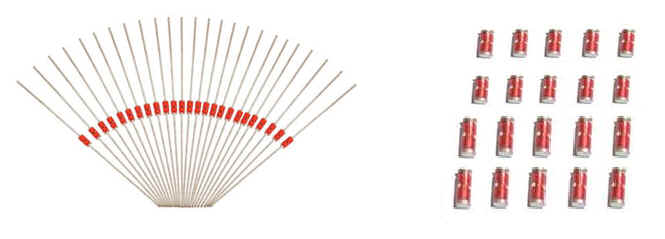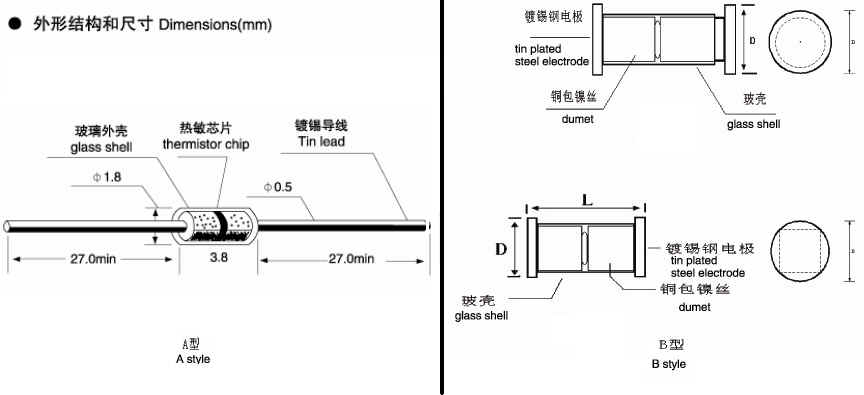Thermistor Properties
1. Resistance-temperature characteristics
The temperature coefficient of the thermistor is much larger than that of the metal thermal resistance, so the sensitivity is very high. At the same temperature, the resistance of the thermistor is much greater than that of the metal thermal resistance. Therefore, the resistance of the connecting wire has very little influence on its resistance, which is suitable for long-distance measurement. The non-linearity of the thermistor R-curve is very serious, so its measuring temperature range is much smaller than that of metal thermal resistance. The Rt-t characteristic curves of various thermistors are shown in Figure 1-5
In the Rt-t characteristic curve of different types of thermistors shown in Figure 1-5. Curve 1 and curve 2 are negative temperature coefficient (NTC type) thermistor curves. Curve 3 and curve 4 are positive temperature coefficient (PTC type) thermistor curves.
It can be seen from the curves shown in Figure 1-5 that the 2 and 3 characteristic curves change more uniformly, so the thermistors conforming to the 2 and 3 characteristic curves are more suitable for temperature measurement. However, the thermistors conforming to the characteristic curves of 1 and 4 are more suitable for composing a temperature-controlled switch circuit due to the steep characteristic changes.


The temperature coefficient of the thermistor is much larger than that of the metal thermal resistance, so the sensitivity is very high. At the same temperature, the resistance of the thermistor is much greater than that of the metal thermal resistance. Therefore, the resistance of the connecting wire has very little influence on its resistance, which is suitable for long-distance measurement. The non-linearity of the thermistor R-curve is very serious, so its measuring temperature range is much smaller than that of metal thermal resistance. The Rt-t characteristic curves of various thermistors are shown in Figure 1-5
In the Rt-t characteristic curve of different types of thermistors shown in Figure 1-5. Curve 1 and curve 2 are negative temperature coefficient (NTC type) thermistor curves. Curve 3 and curve 4 are positive temperature coefficient (PTC type) thermistor curves.
It can be seen from the curves shown in Figure 1-5 that the 2 and 3 characteristic curves change more uniformly, so the thermistors conforming to the 2 and 3 characteristic curves are more suitable for temperature measurement. However, the thermistors conforming to the characteristic curves of 1 and 4 are more suitable for composing a temperature-controlled switch circuit due to the steep characteristic changes.







